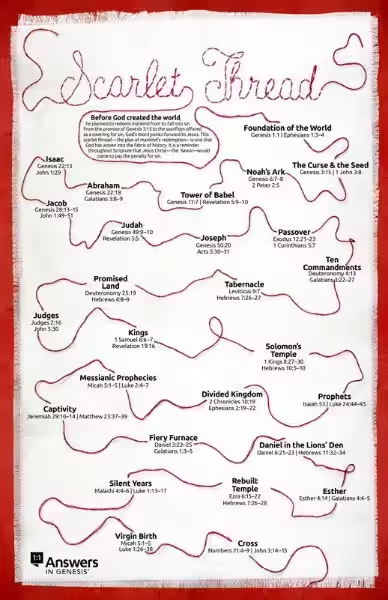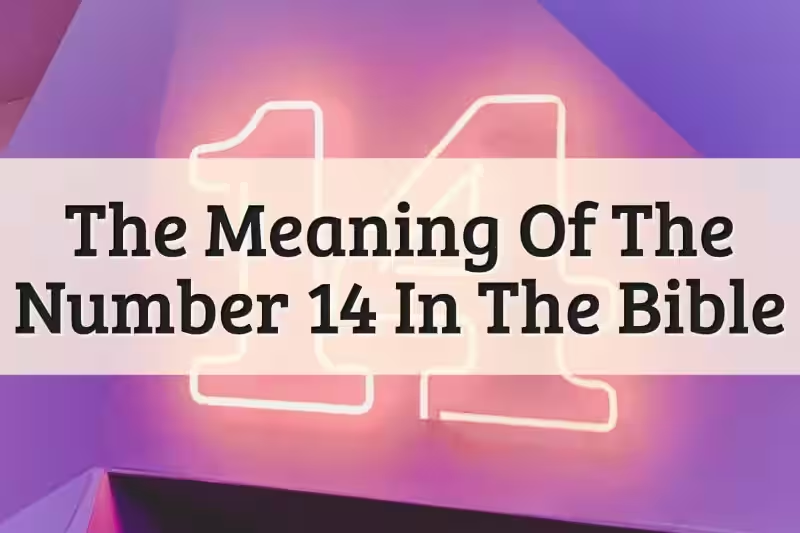Unraveling the Scarlet Thread Bible: A Symbol of Redemption

The phrase "scarlet thread Bible" might sound unfamiliar to many, but it encapsulates a profound and enduring theological concept. This article explores the recurring motif of the scarlet thread within the biblical narrative, explaining its significance and its connection to the central theme of salvation through Jesus Christ. While not explicitly labeled as such, the scarlet thread weaves a powerful, unifying narrative throughout the Old and New Testaments.
The Scarlet Thread: A Symbol of Atonement and Salvation
The Bible doesn't explicitly define the meaning of the scarlet thread; instead, its significance is revealed through its contextual use. Its consistent appearance alongside pivotal events allows for rich theological interpretation, primarily focusing on atonement, salvation, and God's unwavering covenant faithfulness. The color scarlet itself, often associated with blood, immediately points towards sacrifice and redemption.
The repeated appearance of the scarlet thread isn't about a literal thread throughout the Bible. Instead, it's a metaphorical concept representing the continuous flow of God's plan of redemption, culminating in the sacrifice of Jesus Christ. This "scarlet thread" serves as a unifying symbol, connecting disparate events and highlighting the consistent theme of atonement throughout scripture.
Key Instances of the Scarlet Thread in Scripture
Several key instances in the Bible highlight the profound symbolism of the scarlet thread:
Genesis 38: The Birthright of Perez
The story of Judah and Tamar's twin sons, Perez and Zerah, in Genesis 38, introduces the scarlet thread. A scarlet thread was tied around Zerah's wrist, initially marking him as the firstborn. However, Perez was actually born first, demonstrating God's sovereignty over human expectations. This unexpected turn of events foreshadows the lineage of Jesus Christ through Perez, demonstrating God's ability to work outside our understanding and expectations. This emphasizes the surprising nature of God’s plan and His ultimate authority. The seemingly minor detail of the scarlet thread highlights the importance of God's chosen path, even when it appears counterintuitive.
Exodus 26 & 28: The Tabernacle and the High Priest's Ephod
The scarlet thread also appears in the construction of the tabernacle (Exodus 26:1) and the high priest's ephod (Exodus 28:6), alongside gold, blue, and purple. These colors, together with scarlet, represent the holiness and glory of God. While not explicitly explained, commentators often interpret scarlet as representing the atoning blood of Christ, connecting the earthly sanctuary to the ultimate sacrifice. The other colors are often associated with Christ's glory and heavenly origin. The inclusion of scarlet within the sacred garments and the tabernacle itself highlights the centrality of sacrifice within God's plan.
Joshua 2: Rahab and the Scarlet Cord
Perhaps the most compelling use of the scarlet thread is found in the story of Rahab in Jericho (Joshua 2). Rahab, a Canaanite prostitute, aided the Israelite spies. Following their instructions, she hung a scarlet cord in her window as a sign of her faith and a marker for protection. This act of faith saved her and her household from the destruction of Jericho. The scarlet cord, representing blood, mirrors the Passover lamb's blood protecting the Israelites (Exodus 12:13) and prefigures the atoning blood of Christ. It powerfully underscores God's mercy and forgiveness, extending even to those considered outsiders. Rahab's story emphasizes that salvation is available to all who place their faith in God, regardless of their past or social standing.
The Scarlet Thread as an Overarching Theme
The recurring motif of the scarlet thread leads to the concept of a "scarlet thread running through the Bible." This phrase signifies the overarching theme of Jesus Christ and his atoning sacrifice. From the animal sacrifices in the Garden of Eden to the Passover lamb, the ram offered in place of Isaac, the sacrificial system in the tabernacle and temple, and ultimately, the crucifixion of Jesus—the scarlet thread represents the continuous need for atonement and the consistent provision of God's grace.
This continuous narrative of redemption connects Old Testament foreshadowings to the ultimate fulfillment in Jesus' sacrifice. The scarlet thread visually represents the blood shed for the forgiveness of sins, culminating in the powerful statement, "It is finished" (John 19:30), spoken by Jesus on the cross. It symbolizes the completion of God's plan for humanity's salvation.
Conclusion: The Enduring Message of the Scarlet Thread
The "scarlet thread" isn't merely a literary device; it's a potent theological symbol that highlights the overarching message of the Bible: salvation is achieved through faith in Jesus Christ, whose sacrifice atones for humanity's sins. The scarlet thread, therefore, is a powerful reminder of God's unwavering love, His consistent provision for atonement, and the ultimate hope of redemption offered through Jesus Christ. Studying the scarlet thread throughout scripture provides a deeper appreciation for the unity and consistency of God's plan for humanity. It helps us understand that the promise of salvation, symbolized by the scarlet thread, is a continuous narrative that spans from the Old Testament to the New, culminating in the ultimate sacrifice of Jesus Christ.
Frequently Asked Questions: The Scarlet Thread in the Bible
What is the "Scarlet Thread" in the Bible?
The "scarlet thread" isn't a literal, physical thread mentioned repeatedly throughout the Bible. Instead, it's a metaphorical concept used to describe the overarching theme of God's plan of redemption through the sacrificial death and resurrection of Jesus Christ. It represents the continuous need for atonement and the consistent provision of God's grace, connecting various seemingly disparate events across the Old and New Testaments.
Where does the scarlet thread appear in the Bible?
The scarlet thread appears symbolically in several key narratives:
- Genesis 38: A scarlet thread is tied around the wrist of Zerah, one of Judah and Tamar's twin sons, highlighting God's sovereignty in choosing the lineage of Jesus through Perez.
- Exodus 26 & 28: Scarlet is one of the colors used in the construction of the tabernacle and the high priest's garments, connecting earthly worship to the ultimate sacrifice of Christ.
- Joshua 2: Rahab, a Canaanite prostitute, hangs a scarlet cord in her window as a sign of her faith, resulting in her and her family's salvation from the destruction of Jericho. This foreshadows the salvation offered through faith in Jesus.
- Throughout the Old Testament sacrificial system: Animal sacrifices, the Passover lamb, and the ram substituted for Isaac all prefigure the ultimate sacrifice of Jesus.
What does the scarlet thread symbolize?
The scarlet thread primarily symbolizes the atoning blood of Jesus Christ shed for the forgiveness of humanity's sins. The color red, often associated with blood, consistently points towards themes of atonement, salvation, and God's covenant faithfulness. It represents the continuous narrative of God's plan to redeem humanity, from the earliest sacrifices to the crucifixion of Jesus.
How does the scarlet thread connect the Old and New Testaments?
The scarlet thread acts as a unifying thread weaving together events across both testaments. The Old Testament foreshadows the need for sacrifice and atonement, portraying various instances of blood being used to symbolize cleansing and protection. The New Testament fulfills these prophecies through the sacrifice of Jesus, whose blood is the ultimate fulfillment of the scarlet thread's symbolic meaning. His death on the cross is the culmination of this continuous narrative of God's redemptive plan.
What is the significance of the "It is finished" statement in John 19:30?
Jesus' declaration, "It is finished," on the cross marks the completion of the atoning sacrifice, signifying the fulfillment of the scarlet thread's prophecy. It signifies the end of the need for further animal sacrifices and the inauguration of a new covenant based on the sacrifice of Christ.
Is there any other biblical symbolism related to the scarlet thread?
While scarlet is the primary color, other colors used in the tabernacle's construction (gold, blue, purple) also hold symbolic meaning, often associated with Christ's glory, heavenly origin, and kingship, complementing the atoning sacrifice represented by the scarlet thread. Various Old Testament rituals, particularly those involving cleansing and atonement, also relate to the overall theme of the scarlet thread.








